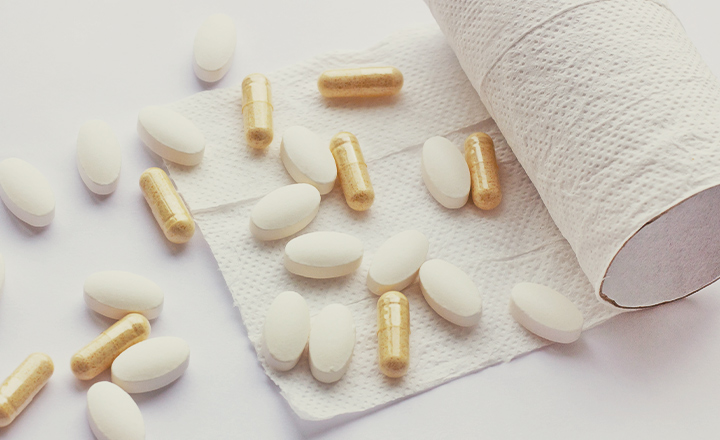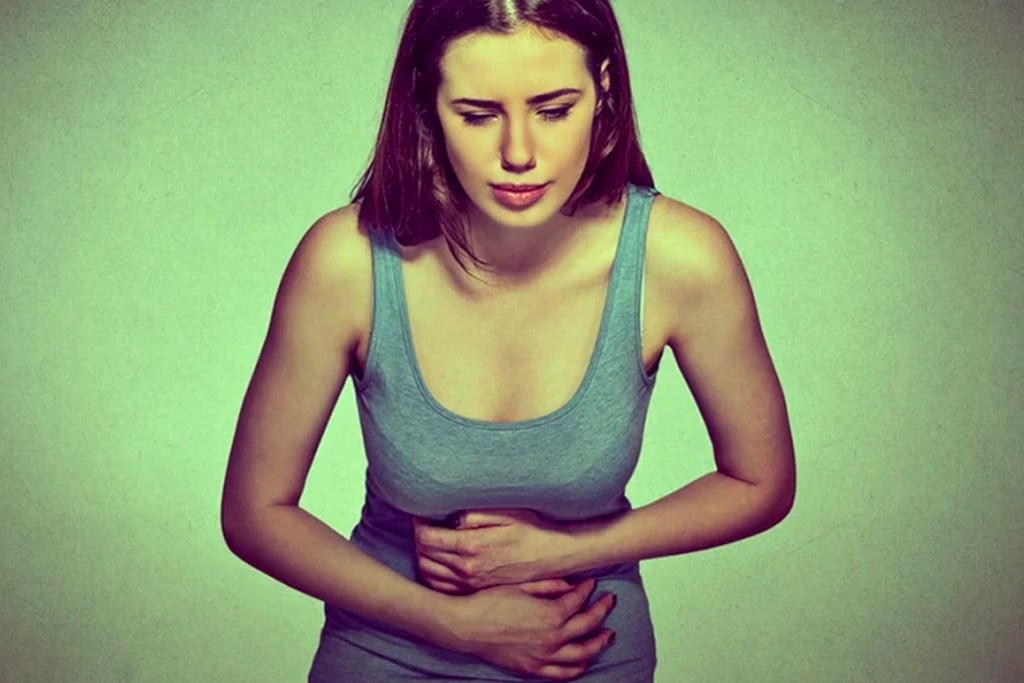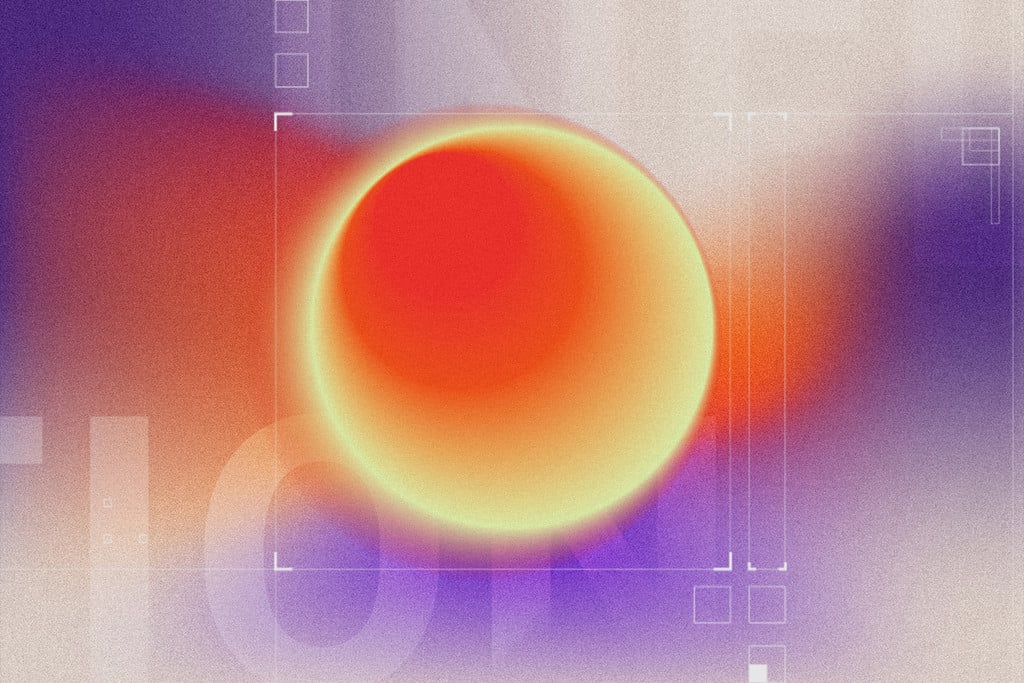.

Can Cannabis Help With Haemorrhoid Symptoms?
Haemorrhoids are one of the most common rear-end complaints. The exact cause remains unknown, but heavy lifting and pregnancy are contributing factors. A range of lifestyle changes and medical procedures can help to tackle them. Now, people are wondering whether weed can help to nip butt pain in the bud. Find out what we know so far.
Contents:
Haemorrhoids are a real pain. These bulging veins can cause serious irritation in the form of pain and itching. But how do these pesky bumps form in the first place, and what can people do to relieve themselves? Below, you’ll find out how they come about, and if cannabis can do anything to improve bothersome symptoms at the back passage.
What Are Haemorrhoids and What Causes Them?
Haemorrhoids, pronounced hem-uh-roids, are also known as piles. These lumpy, painful sites that develop in and around the anus are almost as uncomfortable to talk about as they are physically unpleasant. But what exactly are they? And what causes them?
Haemorrhoids aren’t some kind of obscure growth. They’re actually swollen veins—protruding parts of the vasculature that carry blood back toward the heart. These bulges aren’t dissimilar to varicose veins in that they are swollen and twisted vascular tissue. However, varicose veins tend to develop in the legs and feet.
These protrusions aren’t just regular veins that start to swell. They arise from the haemorrhoidal venous cushions; a specialised part of human anatomy that sit against connective tissue in the anal canal and help us to defecate. As you can imagine, these structures are a common cause of rear-end issues because of their rich vascular supply and sensitive position—they see a lot of traffic, so to speak.
Enlargement and displacement of these biological cushions affects millions of people around the world every year. For example, haemorrhoids affect around 10% of the general population[1] in the United Kingdom every year, and around 4.4% of the population[2] in the United States.


Types of Haemorrhoids
Not all haemorrhoids are the same. Some occur inside the body; others outside. They also differ based on whether they cause blot clots to arise. Here are the four main classifications of haemorrhoids:
| Internal | As their name suggests, these haemorrhoids occur inside of the anus, and for that reason are not visible. Less bothersome internal haemorrhoids are small bumps. However, these sometimes develop into large protrusions that cause more discomfort. |
| Prolapsed | When internal haemorrhoids become extremely swollen and elongated, they begin to protrude outside of the anus. In less serious cases, this only happens upon straining. However, particularly elongated swollen veins protrude even during rest. |
| External | This type of haemorrhoid forms underneath the skin outside of the anus. Here, the blood vessels have become so swollen that they protrude from under the skin, sometimes develop into a hard lump, and cause a lot of pain. |
| Thrombosed | Both internal and external haemorrhoids can collect pooled blood to the degree that blood clots form. Although not dangerous, these clots obstruct blood flow and make the condition even more painful. |
| Internal |
|
As their name suggests, these haemorrhoids occur inside of the anus, and for that reason are not visible. Less bothersome internal haemorrhoids are small bumps. However, these sometimes develop into large protrusions that cause more discomfort. |
| Prolapsed |
| When internal haemorrhoids become extremely swollen and elongated, they begin to protrude outside of the anus. In less serious cases, this only happens upon straining. However, particularly elongated swollen veins protrude even during rest. |
| External |
| This type of haemorrhoid forms underneath the skin outside of the anus. Here, the blood vessels have become so swollen that they protrude from under the skin, sometimes develop into a hard lump, and cause a lot of pain. |
| Thrombosed |
| Both internal and external haemorrhoids can collect pooled blood to the degree that blood clots form. Although not dangerous, these clots obstruct blood flow and make the condition even more painful. |
What Causes Haemorrhoids?
The exact cause of haemorrhoids remains unknown. An older theory posited that they were simply varicose veins, but data shows that patients with high blood pressure and varices aren’t at increased risk of developing haemorrhoids. A more recent theory[3] points toward the sliding of the anal canal lining. In this model, the tissues that support the anal cushions begin to deteriorate, which then causes the displacement of the cushions themselves, which causes the nearby veins to dilate and swell.
Age stands as one of the biggest risk factors of developing haemorrhoids, as the tissues in the area weaken and stretch. They can also form following increased pressure in the region caused by:
| Pregnancy | Obesity | Low fibre intake | Chronic constipation or diarrhoea | Straining during bowel movements | Heavy lifting |
| Pregnancy | Obesity |
| Low fibre intake | Chronic constipation or diarrhoea |
| Straining during bowel movements | Heavy lifting |
How Haemorrhoids Are Treated
There are a host of treatments available to patients with haemorrhoids, ranging from topicals and ligation to lifestyle changes. Check out the most common below, before we delve into a discussion of cannabis and haemorrhoids.
The Current Treatment Approach
In a clinical setting, healthcare practitioners treat haemorrhoids in several different ways, including:
| Rubber band ligation | This procedure involves placing a rubber band around a haemorrhoid to block blood flow to the site. |
| Haemorrhoidectomy | This is the surgical removal of a haemorrhoid performed under general anaesthetic. |
| Infrared coagulation | This non-surgical treatment uses infrared light to cause coagulation (clotting) of the blood at the affected area, which causes the tissue to recede. |
| Rubber band ligation |
|
This procedure involves placing a rubber band around a haemorrhoid to block blood flow to the site. |
| Haemorrhoidectomy |
| This is the surgical removal of a haemorrhoid performed under general anaesthetic. |
| Infrared coagulation |
| This non-surgical treatment uses infrared light to cause coagulation (clotting) of the blood at the affected area, which causes the tissue to recede. |
Patients can also implement lifestyle changes to prevent haemorrhoids in the future and reduce the severity of their condition. These measures include:
- Stay hydrated
- Eat a high-fibre diet
- Don’t strain on the toilet
- Stay active and exercise to avoid long periods of sitting
- Don’t resist the urge to go to the toilet
Haemorrhoid Cream
Doctors also prescribe topical creams to ease the pain, swelling, and itching caused by haemorrhoids. These products contain phenylephrine, a drug primarily used as a decongestant that causes blood vessels to constrict.
Patients should apply this topical according to a doctor's instructions, which often includes up to four applications per day, or after each bowel movement. Some patients also choose to apply topical witch hazel products to reduce pain and itching. This flowering plant has astringent properties and is used to tackle a long list of skin, eye, and scalp conditions.
Cannabis, CBD, and Haemorrhoids
So, how does cannabis fit into this picture, if at all? Can you expect to apply the herb to your hiney in hopes of helping? As always, the answers to such questions are only found in the scientific literature. Unfortunately, data surrounding cannabis and a long list of more serious conditions remains scarce. Researchers haven’t found the time or received permission to pursue how buds affect butts.
While we wait for this data to emerge (hopefully within the next few years), we have to settle for second-best. A large archive of studies have pitched cannabinoids against cell and animal models of itch, pain, and inflammation. The results from this research can provide clues as to how cannabis might work to influence symptoms of haemorrhoids in humans.
The Link Between the ECS and Haemorrhoids
First and foremost, we know that cannabis constituents impact the endocannabinoid system (ECS). But why does this matter? Well, the ECS serves as the universal regulator of the human body. This network of receptors, signalling molecules, and enzymes helps to regulate everything from nervous system firing and bone remodelling to skin health and stress.
Because the ECS regulates so much of human physiology, malfunctions in this system may also underpin certain health conditions.
Not enough data exists to state that trouble with the ECS underpins haemorrhoids. However, the far-reaching system certainly plays an important role in epithelial cells that line parts of the body, including the anal canal. The regulatory network also helps to maintain the skin[4] by contributing to cell growth, differentiation, and proliferation.
Researchers are also exploring the impact of plant cannabinoids (phytocannabinoids) on the ECS. Molecules such as THC manage to bind to ECS receptors, which means they have the direct ability to influence the system that keeps most of our body in check. So far, they’ve made good progress in testing them against models of symptoms seen in haemorrhoid patients, including pain and inflammation.
CBD and THC: What Does the Research Say?
The cannabis plant holds the title of a phytochemical biofactory. The species manufactures over 500 unique chemicals, and its flowers churn out hundreds of cannabinoids and terpenes that influence human biology and the ECS. But do any of these chemicals have a positive impact on haemorrhoids? At this point, we simply don’t know. However, ongoing preclinical trials are testing them in models of inflammation, itch, and pain. Let’s take a deeper look into these investigations.
CBD has skyrocketed to fame in recent years, partly because it lacks psychotropic effects. This cannabinoid doesn’t bind to ECS receptors with much affinity, but it does influence endocannabinoid levels[5] in the body by disrupting ECS enzymes. As haemorrhoids become inflamed, they release an irritating mucus that causes a condition known as pruritus ani.
Currently, studies are looking at CBD and its metabolites to determine their anti-inflammatory potential[6]. Other investigations are probing CBD for any effects on pain signalling[7]. While many of these studies are focused around neuropathic pain, any findings could translate over into the acute bouts of discomfort experienced by haemorrhoid patients.
Although sometimes outcast because of its psychoactive effects, researchers are also testing THC[8] in models of pain. Positive findings in this field could lead to the addition of the cannabinoid to topical formulas, where it wouldn’t impact mental state. Researchers are also testing both THC and CBD in models of itch[9] because of their action on CB1, CB2, and TRPV1 receptors.
Preventing Haemorrhoids: Does Cannabis Look Promising?
Can cannabis help to get rid of haemorrhoids? Better yet, can it prevent the condition in the first place? Science simply hasn’t reached a conclusion. Hundreds of topical cannabis products exist that contain myriad cannabinoids, terpenes, and natural products. While anecdotal accounts look promising, the lack of data in this field means we can’t say with confidence if the herb holds any viability. For now, we’ll have to wait for human trials to be carried out before we see the addition of THC, CBD, and their phytochemical cousins in haemorrhoid creams.
- CKS is only available in the UK | NICE https://cks.nice.org.uk
- Review of Hemorrhoid Disease: Presentation and Management - PMC https://www.ncbi.nlm.nih.gov
- Hemorrhoids: From basic pathophysiology to clinical management - PMC https://www.ncbi.nlm.nih.gov
- The endocannabinoid system of the skin in health and disease: novel perspectives and therapeutic opportunities - PMC https://www.ncbi.nlm.nih.gov
- Cannabidiol enhances anandamide signaling and alleviates psychotic symptoms of schizophrenia - PMC https://www.ncbi.nlm.nih.gov
- Cannabidiol (CBD) and its analogs: a review of their effects on inflammation https://www.sciencedirect.com
- The Role of Cannabidiol (CBD) in Chronic Pain Management: An Assessment of Current Evidence | SpringerLink https://link.springer.com
- The analgesic effect of oral delta-9-tetrahydrocannabinol (THC), morphine, and a THC-morphine combination in healthy subjects under experimental pain conditions https://www.sciencedirect.com
- Cannabinoids for the treatment of chronic pruritus: A review https://www.sciencedirect.com







































